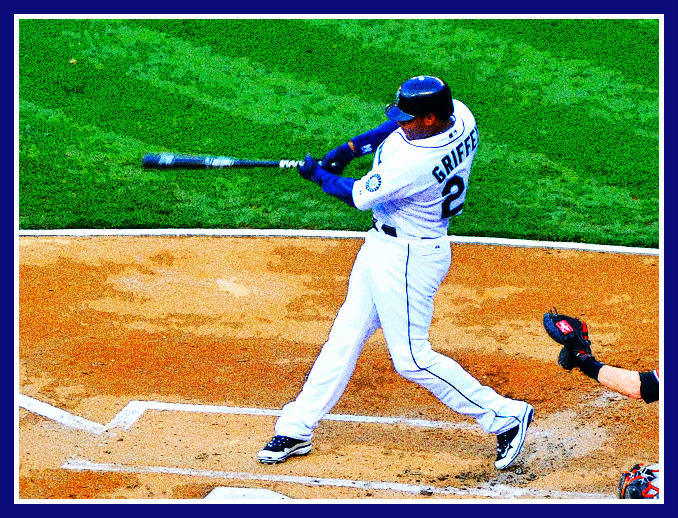12 Running Shoes of Christmas
Asics | $110
These hot pink and purple kicks are part of Asics' Gel-Neo33 collection, which combines a dual density midsole system
with a stable outsole to offer runners with a lightweight, natural pair of shoes.
Pearl Izumi | $130
Think comfort, perfect fit, cushioning and stability; a happy medium between a runner and their turf.
Pearl Izumi specializes in cycling, which gives their running merchandise a new spin and distinction from other brands.
Brooks | $100
Brooks' PureDrift collection is the next best thing to running barefoot.
Its lightweight construction allows feet to flex in their grooves without experiencing road burn.
Newton | $149
This is your go-to shoe for everyday runs on all types of terrain: roads, urban trails and technical trails with elevation gain.
These trainers offer responsive cushioning, a stable platform and lightweight materials.
Nike | $110
These super bright, rad kicks are not only designed for comfort and performance,
but runners can also order them exactly as they like, right down to the colors and key words or names to the tongue tops.
New Balance | $95
These svelte shoes are designed for trail running and can be worn with or without socks.
Their design helps improve gait issues and are especially beneficial for neutral runners.
New Balance |$30
Perfect for competitive cross country events, the New Balance 700 secures feet as they twist and turn and a flexible sole
grips unpredictable terrain. A rubber outersole offers longevity while the upper mesh material offers comfort and support.
Nike | $130
Nike's Free collection is designed to allow feet to move freely and naturally,
which initiates more muscle activity with a lighter, more flexible shoe.
Mizuno | $105
These shoes are built for speed and intended for sprinters and short distances. Mizuno's midsole technology directs impact away
from the feet while the sole of the shoe creates a smooth, rocking transition from heel to toe.
Nike | $160
The Nike Lunar Spider midsole gives runners endless support through superb cushioning and stable soles.
The durable foam core is lightweight and springy for fast response and support.
Reebok | $80
Reebok's ZigNano Fly 2 design features a unique zig zag sole for effective cushioning when competing or training.
The shoes' traction allows runners to explore various terrain and its mesh provides comfort, fit and durability.
Asics | $120
Remarkably comfortable platform for a great, everyday training shoe.
Especially supportive for those with normal arches and flat feet.
2012 Spectometer Hitting Leaderboards -- "Production Percentage"
The leaderboard series continues.
Once again, a recap of the ground rules:
- Ages 26 and over are considered "post-prospect" (for hitters), and are not counted (sorry Luis Rodriguez for plate skills and Joseph Dunigan for slugging).
- A season needs at least 100 plate appearances to count. Seasons between 50 and 99 PAs I will look at, and might note, but they won't go on the leaderboard.
- Seasons that are entirely in foreign leagues don't count. Mixed seasons with some foreign and some domestic stats I will count (but note with a caveat). Good news for Gaby Guerrero fans (of which I am one).
- The normal age-arc I use is Rookie/Short Season: 19 ... Low-A: 20 ... High-A: 21 ... AA: 22 ... AAA: 23. A guy who is younger than age-arc is noted in green. One year older than normal age-arc is not noted, but two years or more older earns an "age caveat" and is noted in blue.
- Ages are from baseball-reference.com "age season" (age as of midnight on June 30 of the season).
***
Stat: Production Percentage
Formula: (XBH + BB)/PA (expressed as a percent)
Interpretive rule of thumb: This stat is more "raw" than the more "sophisticated" Plausibility Index, but it gives a good idea of which hitters are producing at the plate. I've found that almost all successful major league hitters had a Production Percentage of 19% or higher against minor league pitching. It's not as useful for relative rankings (since it devalues HR), but it's good for a "yes/no" kind of analysis. If a guy is way below 19%, then he may not be as good as he appears (success may be based on getting a lot of singles).
All hitters:
- Mike Zunino (21): 26.3%
- Marcus Littlewood (20): 24.3%
- Rich Poythress (24): 23.6%
- Nate Tenbrink (25): 23.3%
- Isaiah Yates (17): 23.2%
- Joe DeCarlo (18): 22.4%
- Jabari Henry (21): 22.0%
- Kevin Rivers (23): 21.3%
- Jabari Blash (22): 21.2%
- Dario Pizzano (21): 21.2%
- Brad Miller (22): 21.2%
- Ji-Man Choi (21): 21.1%
- Dennis Raben (24): 20.8%
- Gabrial Franca (18): 20.6%
- Johermyn Chavez (23): 20.5%
***
Below age-arc hitters:
- Isaiah Yates (17): 23.2%
- Joe DeCarlo (18): 22.4%
- Gabrial Franca (18): 20.6%
- Timmy Lopes (18): 18.8%
- Nick Franklin (21): 18.7%
***
Glove-position hitters:
- Mike Zunino -- C (21): 26.3%
- Marcus Littlewood -- C (20): 24.3%
- Isaiah Yates -- CF (17): 23.2%
- Jabari Henry -- CF (21): 22.0%
- Brad Miller -- SS (22): 21.2%
***
Top 15 with age-caveat hitters excluded:
- Mike Zunino (21): 26.3%
- Marcus Littlewood (20): 24.3%
- Isaiah Yates (17): 23.2%
- Joe DeCarlo (18): 22.4%
- Brad Miller (22): 21.2%
- Ji-Man Choi (21): 21.1%
- Gabrial Franca (18): 20.6%
- Johermyn Chavez (23): 20.5%
- Christian Charmichel (20): 19.0%
- Timmy Lopes (18): 18.8%
- Nick Franklin (21): 18.7%
- Gabriel Guerrero (18): 18.7% (includes some foreign stats)
- Jack Marder (22): 18.4%
- Denny Almonte (23): 17.8%
- Stefen Romero (23): 17.6%
***
You can see why I love the Teen Titans (Guerrero, Lopes, DeCarlo, Franca and Yates ... plus Pike and Sanchez on the mound). They register much, much more strongly than the prior group (Castillo, Pimentel, M. Peguero, Morales and Burin, who, at this point, all look overrated). And it's not just this category.
And Marcus Littlewood, under the radar, turned into a very interesting young hitter, with a .390 OBP after converting to catcher.
BJOL on Myers-Shields
I thought you amigos would find this exchange pretty cotton-pickin' interesting. Any holdouts on that $3 a month over there? ;- )
.
Outfit Du Jour: Big jacket, warm knits and ankle boots
This woman knows the key elements for cool temperatures: an oversized jacket, a cozy scarf, knit tights and ankle boots. The svelte silhouette of her legs balances the roomy quality of her jacket and scarf while the different textures and colors complement one another. Also, in case you didn't know, this is how you rock a backpack.
Oversized jacket, cozy scarf, knit tights and ankle boots: yes!
Blast from the past: rockin' the backpack!
Warm knit tights with caramel ankle boots: it's a do!
Selling Your Soul
.
Dr. K's point right here:
"The franchise value has increased from 48% over those nine years, but over the time period the value of the Rangers has increased by 120% and the value of the Angels by 417%*."
Lemme pull rank here a bit, as (apparently) the Seattle blogger most familiar with 7th-floor steering committees. F-500 execs live and die by market share, live and die by the question of, "How are we doing compared to other people selling the same thing?"
Dr. Kelly's point not only has traction; it's a point that has so much traction that it had buried jemanji in oblivion. It hadn't even occurred that the appreciation had been so low for the Mariners. 48% over nine years is only 5.3% per year, and that is pitiful at these corporate levels, in this industry sector. 10%, 12% per year would be only marginally acceptable. The Rangers have scored over 30% per annum, calculated straight-line in retro.
Bloggers and Warts Spiders talk "profit" when, in fact, yearly cash flow is a trivial consideration compared to appreciation. The profit is when you sell (and that profit is fairly liquid, can be -- and is -- pulled at any time through bank loans).
For the Mariners it's a LITTLE different, because they're not EXACTLY a Seattle's Best Coffee that could be PUT TO DEATH by a Starbucks. The Mariners, almost uniquely, face no competition for market from other MLB franchises. But do you notice how hyper-sensitive the Mariners are even to the Sonics and Seahawks? Who don't play, mostly, at the same time they do?
The execs can and do look at Kelly's issue -- 1.2x and 4x growth for AL West teams while they saw a piddling 0.5x growth over a decade -- and they panic, believe me. Now I finally understand why the Mariners' puzzling willingness to bid on Prince Fielder last year.
..............
I think I read that the M's attendance drop, over the last decade or so, has been THE largest in SPORTS. Other teams have gone from winners to losers, but other teams have not lost their soul, have not decided that the pennant race is peripheral to what they do.
You could compare bloggers' outrage to the Royals' temerity in deciding to trade for James Shields. For many bloggers, the pennant race is peripheral to making smarter-than-thou decisions. You can certainly argue that Wil Myers is too precious to give away; Bill James is arguing that at BJOL. What you can't do is multiply that variable times the variable of "The Royals Have No Right To Try To Win."
It is precisely here, in the barren wilderness of non-pennant-race prioritization, that Dr. D has been wandering since the 2001 trade deadline. The Mariners decided that they couldn't get carried away with winning. The 2001 Mariners had briefly enjoyed the fruits of their 1999-2001 windfall: a $400M taxpayer stadium coupon, and the dazzling brilliance of Pat Gillick. Thanks to the taxpayers and Gillick, the Mariners' shot-callers were local celebrities for a few years.
Except for the five-year blip caused by the taxpayers and Gillick, and the little asterisk of the wasted Piniella-Griffey era, the Mariners since 1977 have played soulless baseball.
Do the Mariners want to win? All sports teams are interested in that, just like all fathers are interested in having sons who adore them. Some fathers prioritize that more than other fathers do. Some fathers have soulless family relationships. It didn't happen because they set losing as a goal. It happened because they didn't pay the price necessary to have families that were filled with joy and love. They didn't prioritize.
Sports teams have tons of priorities: franchise appreciation, and the corporate "brand," and to be good community citizens, and to win by the way, and to have a great relationship with Nike, and to feather their next TV contract nest, and to have players who don't go to jail, and 1,000 other priorities. Some teams put "winning" higher on that list than do others. Guess where Magic Johnson puts it on HIS list?
...............
As Sandy says, Hamilton's marquee value in and of itself *isn't necessarily* the key to a turnaround; neither is winning, exactly. It's a sense that you have a team, from the CEO down, a team that "wants to win" as Magic Johnson put it when he just authorized the latest Greinke cash splurge in Dodger Blue.
The M's sold their soul, and they have paid dearly. Hamilton, plus other adds, would have been a big step towards reclamation of that soul. What they do now, I dunno.
The Mariners don't sell tires or widgets or tax preparation. They sell a pennant race. The Royals traded for James Shields because of a PENNANT RACE. Whether it was correct execution is totally irrelevant. The corporate mission is what defines your brand and your future.
Since the trade deadline 2001, Silentpadna and I have been waiting for a team that wants to win as badly as its rivals do. There have been a few minor signals now, that this may be changing somewhat. We'll see.
..............
Great article, Dr. K.
Sketchy Sketches: Christmas Sweatz
Containing a plethora of extra cast, (Grace Helbig, Hannah Hart, Benny Fine and DeStorm Power), Rhett & Link made a nice little tune about the woes of boring sweats and a clever way to make them festive. Well, as long as you have at least one friend.
Pulling At My Heartstrings: Tongue Twisters Twist Toddlers Tongue
Tongue twisters get us all little girl, they get us all. But our hearts melt at the sight of watching you try.
Things You Should Probably Know: Using Science To Be Productive
If you are anything like me, one of the hardest parts of your day is taking that first step out of bed to face the world. Fortunately for us all, ASAP Science decided it was time to talk about the science of productivity. Watch, learn, rethink your strategies in life. We can all be productive, as long as we start making the change.
Pop Culture Happenings: 'Pacific Rim' Trailer Will Blow You Away
Guillermo del Toro has been speaking about "Pacific Rim" for a while now, so when I found out an actual trailer had dropped, I got excited. With Idris Elba, Charlie Hunnam, giant robots and huge crazy monsters, what's not to love?
test
test
















